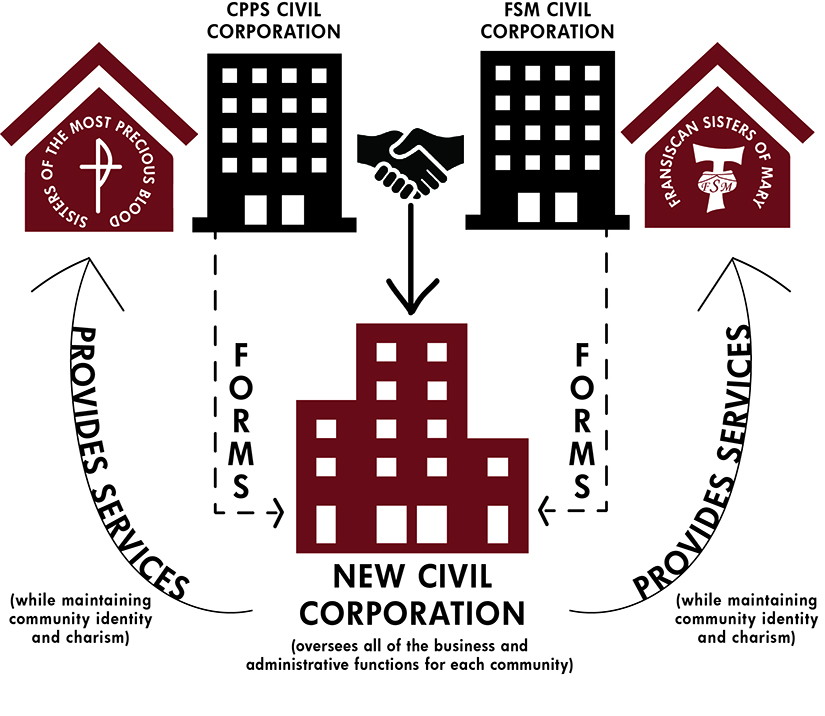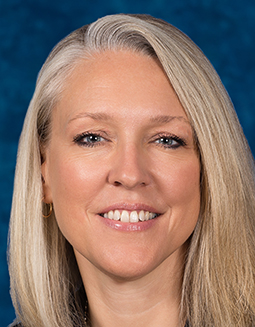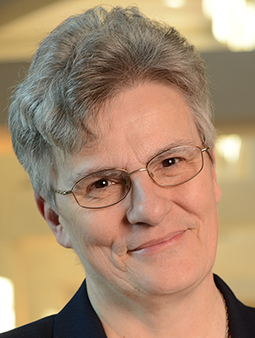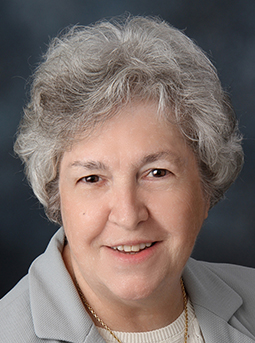 Photo Credits: Information courtesy Global Sisters Report/ National Catholic Reporter
Photo Credits: Information courtesy Global Sisters Report/ National Catholic ReporterA new model of governance will ensure ongoing care for sisters and continuation of charisms and ministries for two communities of women religious in the Archdiocese of St. Louis.
The Sisters of the Most Precious Blood of O’Fallon and the Franciscan Sisters of Mary, with headquarters in Bridgeton, have hired Allison Hewitt as executive director of a new organizational structure called collaborative  Allison Hewittgovernance. The model functions as a separate civil corporation, providing for the continued oversight of civil and canonical management of the two religious communities when there are no longer sisters able to fulfill the duties.
Allison Hewittgovernance. The model functions as a separate civil corporation, providing for the continued oversight of civil and canonical management of the two religious communities when there are no longer sisters able to fulfill the duties.
Vocations are declining in both communities. The Franciscan Sisters of Mary have 55 members in the community and have not had anyone make perpetual vows in 20 years. They stopped recruiting vocations in 2001. In 2011, they sold their convent, and some sisters moved into The Sarah Community in Bridgeton with others living elsewhere.
Similarly, the Sisters of the Most Precious Blood stopped pursuing new vocations several years ago. The last time a sister made final vows was in 2007. The community, which currently has 103 members, later transformed the O’Fallon motherhouse and infirmary into senior apartments and a skilled nursing home. (The senior apartments remain a joint venture for the community, while the skilled nursing home was sold to a company.) Some of the sisters live in those communities.
In 2013, Franciscan Sisters of Mary leadership approached the Precious Blood sisters about a collaboration, according to Sister Judy Bell, president of the Franciscan Sisters of Mary. ”The leadership at the time approached the CPPS community, inviting them to consider working together on a structure that would meet both congregational needs in taking care of our sisters and also to have a governance piece to it,” she said.
The communities worked with Sister Kelly Connors, a canon lawyer and Sister of the Presentation of Mary with expertise in governance issues. Religious communities have two entities — the canonical, which is recognized by the Church as part of canon law; and the civil, as a nonprofit organization, which is recognized by civil government. Sr. Bader
Sr. Bader
Other religious communities have come together under a covenant, in which one community essentially takes on management of another community that is no longer able to do so. The Franciscan Sisters of Mary and Precious Blood Sisters, however, wanted to form a structure that would allow both to maintain their individual identities and charisms.
Under collaborative governance, the two communities have created a new corporation that oversees all of the business and administrative functions for each community. In her role as executive director, Hewitt will oversee the directors of offices of health care for the sisters, finances and communications. She also maintains a working relationship with the director of spiritual care and community life. Integral to her position will be formation and staff development in the mission, charism and values of the two congregations and the collaborative governance organization.
Sister Judy noted that while there is an element of grief and letting go in the change, the sisters knew that “we wanted to live our lives to the fullest as we can. At this point, we needed to look at a structure that allows us to do that. We’re sharing that management piece with wonderful lay people who understand the mission of the Church and our charisms, which can carry forward.”
The Franciscan Sisters of Mary describe their charism as rooted in presence and healing, which historically has been in the area of health care; the Precious Blood Sisters have a charism of reconciliation. “How we describe that is being Christ’s continuing presence to the world,” said Sister Janice Bader, president of the Sisters of the Most Precious Blood. “That has taken several forms and within numerous ministries over the years, primarily in education.”
Sister Judy said that a commonality of the charisms is “being present to another. Whether it’s through a healing relationship or a reconciliation relationship, it’s that presence of people together.” Sr. Bell
Sr. Bell
“It’s been an exciting journey — a journey that we have no template for,” Sister Judy added. “It has been a challenge developing this and at the same time to not only be attentive to the congregations’ needs, but to be true to our own identities and place within the Church and archdiocese.”
Hewitt has a master’s degree in business administration and has experience working with nonprofit organizations for 17 years, 13 of which were with Catholic religious organizations. She most recently served in ministry as national executive director of mission advancement with the Marianist Province for the United States, with primary responsibilities in communications and fundraising. She and her husband are the parents of two children and live in Brighton, Ill. They are members of Saints Peter and Paul Parish in Alton.
Hewitt said she is struck by the “pioneering women” who began these communities, “looking to what the Church needed at the time. The exciting part of this model is that it’s looking to what the Church needs today, and going into new territory. This will allow them the gift to continue their charisms, but also as a gift to the Church for other congregations that might be in a similar situation down the road.”